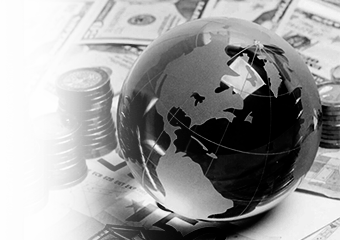Main indicators of the banking and financial sphere
Main indicators
Monetary Policy
1991-2016
- The main task of the Central Bank in 1995-2018 was to maintain the exchange rate of the national currency at a stable level
2017-2020
- Since 2019, the main task of the Central Bank has been to ensure the stability of pricing, banking system and payment systems
1991-2016
- The main task of the Central Bank in 1995-2016 was the practical application of the exchange rate targeting regime
2017-2020
- As a result of introducing new monetary policy mechanisms in 2020, the annual inflation rate decreased from 15.2% in 2019 to 11.1% in 2020. From January 1, 2020, interest rates on loans issued by commercial banks in national currency began to be set at a level not lower than the Central Bank's refinancing rate, and from January 1, 2021, commercial banks were granted the right to determine interest rates independently. The positive impact of reforms in this area is also evidenced by World Bank estimates, according to which the decrease in inflation allowed the Central Bank to reduce the base rate from 16% to 14%. Growth in lending to the economy slowed from 52% in 2019 to 34% in 2020. Despite declining capital adequacy ratios and rising distressed loans, Uzbekistan's financial system has sufficient capital (above Basel III's minimum requirements) to cope with potential credit shocks
Expected results in 2030
- Following the main directions of monetary policy for 2021 and the period of 2022-2023, targets are set to reduce inflation to 10% in 2021 and a constant target inflation rate of 5% from 2023. The current "relatively tough" conditions of monetary policy will remain until the end of 2021. According to forecasts, the consolidated budget deficit will decrease to 2.5% of GDP in 2022. Structural reforms will continue, and regulated prices will be liberalized in 2022-2023
1991-2016
- Until 2017, the population had virtually no opportunities to withdraw cash from ATMs in the country
2017-2020
- Since 2017, restrictions on the circulation of cash have been removed
Cash withdrawal from ATMs (trillion soum)
1991-2016
- Virtually no such opportunities existed
2017-2020
- in 2020 – 62,2
The rate of return of cash to the bank's cash desks (percentage)
1991-2016
- in 2016 – 89%
2017-2020
- in 2020 – 100%
Currency market liberalized
1991-2016
- From 1991 to 2016, the country had an official rate, the exchange rate, and the "black market rate": the unofficial exchange rate of foreign currency. That led to the "cash problem."
- Until 2017, one of the main justified criticisms from the international business community against the Uzbek economy was an inefficient monetary policy based on non-market rules.
2017-2020
- On September 5, 2017, a free exchange of the national currency – soum was introduced. As a result, the "cash problem" in the country was eliminated
The volume of currency bought by the population increased 15 times
1991-2016
- in 2016 – 273 mln USD
2017-2020
- in 2020 – 4.1 billion USD
1991-2016
- Until 2016, there were no automated exchange offices 24/7.
2017-2020
- Since 2017, 24/7 automated exchange offices have been introduced. In 2020, this number reached 1,376.
1991-2016
- In 1998-2016, the average annual depreciation of the (informal market) exchange rate was 24.4%
2017-2020
- The average annual depreciation of the exchange rate in 2017-2020 was 10.4%
The volume of currency bought from the population has increased 1,000 times
1991-2016
- in 2016 – 4 mln USD
2017-2020
- in 2020 – 4.6 billion US
Opportunities for using bank loans
1991-2016
- In 1991-2016, the population was limited in opportunities
2017-2020
- In 2017-2020, 24 loans for the population and 65 loans for entrepreneurs were offered
1991-2016
- In 1991-2016, it was not possible to transfer payments in real-time (24/7)
2017-2020
- Since 2020, the "Fast Payments System" has been launched, which operates in 24/7 mode
Number of ATMs and self-service kiosks
1991-2016
- in 2010 – 500 units
2017-2020
- in 2020 – 11,800 units
Financial markets (insurance, leasing, stock markets)
1991-2016
- Until 2017, there was no IPO (primary public offering) in Uzbekistan at all
2017-2020
- In 2018, for the first time in Uzbekistan, "Quartz" carried out an IPO
The securities market
1991-2016
- In 1991-2018, there was no market for government securities
2017-2020
- In 2018, the issue of government securities in national currency began (600 billion soums)
1991-2016
- In 2017, there were 27 insurance companies, and the volume of insurance payments amounted to 900 billion soums
2017-2020
- In 2020, there were 40 insurance companies, and the amount of insurance payments was more than 2.2 trillion soums
1991-2016
- In 2016, the amount of lease agreements was 973 billion soums
2017-2020
- In 2020, the size of leasing agreements amounted to more than 1.9 trillion soums






